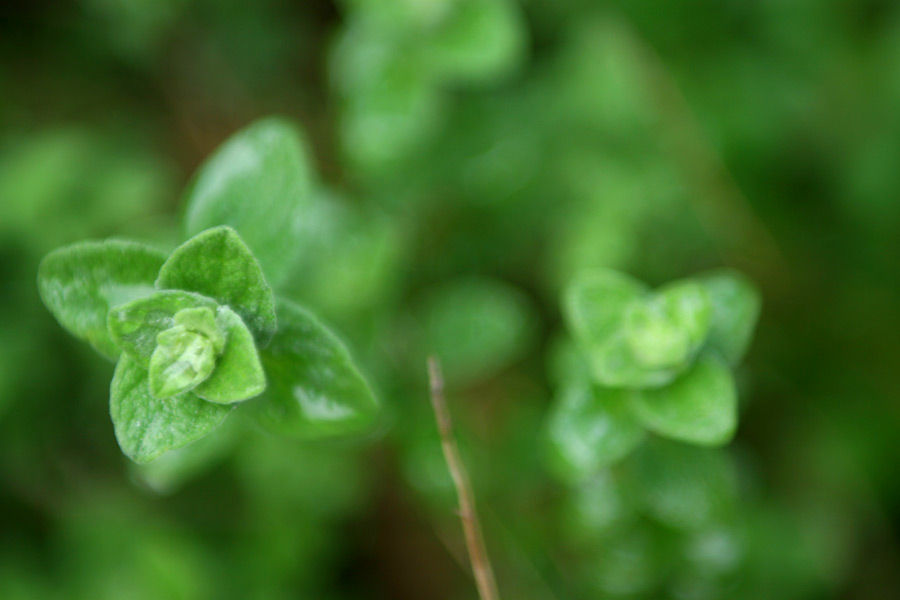
"Plants are the foundation of civilization and culture. They created the biosphere of the earth's surface, and they regulate its functions. Plants are the ultimate source of all health and prosperity; they feed us, give us clothing and shelter, provide fuel, fiber, and countless other necessities. Every breath we breathe is the breath of plants, which supports all life. Plants are the origin of medicine." Floracopeia
The first plants probably developed from algae and lived in water. Mosses and liverworts appeared on land around 475 million years ago, next came clubmosses, horsetails, and ferns, followed by cone-bearing cycads and conifers, and then flowering plants.
The Plantae Kingdom
In the Plantae Kingdom, plants are broken into two groups:
Non-vascular plants do not have true roots, stems, and leaves and therefore can not transport fluids and nutrients through their bodies; they must rely on absorbing it from the surrounding environment. Non-vascular plants reproduce by spore and do not produce flowers, fruit or wood. There are over 20,000 species of non-vascular plants with some species microscopic in size and others more than 1 meter in height.
Vascular plants have roots, stems, and leaves allowing for the transport of fluid and nutrients through their bodies. Vascular tissues are called the xylem and phloem - the xylem transports water and minerals and the phloem transports nutrients throughout the plant. Vascular plants can be further classified based on whether or not they are seed bearing and whether they have flowers. There are over 390,000 species of vascular plants.

The four major land plant groups:
Bryophytes (Greek. meaning “moss plant”) are non-vascular plants and include mosses, liverworts (leafy, flowerless, rootless plants) and hornworts (aquatic plants that have forked leaf-like structures and form branched clusters).
Pteridophyta (Greek. meaning “plant”) are vascular seedless, flowerless plants that depend on the production of spores to propagate. Pteridophytas include ferns, horsetails, and whisk ferns and have a fossil record dating back to the Devonian period, a period of time during the Paleozoic Era, lasting from about 416 to 359 million years ago. Today, there are about 13,000 species in 35 plant families and 568 genera. A number of pteridophytes are aquatic, including salvinia, water ferns, water velvet, and water sprites.
Gymnosperms, (Greek, meaning "naked seed") are vascular, seed (cone) bearing, flowerless plants and include more than 730 species. Gymnosperms include all conifers, cycads, ginkgo biloba, and gnetophytes. Conifers include pines, cedars, redwoods, firs, cypress, yews, spruces, and larches. Cycads are primitive compared to conifers and grow predominantly in tropical and subtropical zones, such as Central America, Southeast Asia, and eastern Africa. Many species of ginkgoes appear in the fossil record, but today there is only one species. Gnetophytes include a range of broad-leafed vines, trees, and shrubs, including Ephedra and Welwitschia.
Angiosperms (Greek, “seed receptacle”) are seed-producing, flowering vascular plants that produce seeds from the ovary of their flowers. They are the most diverse group of plants having more than 260,000 and including include grains, grasses, flowers, fruits, and vegetables . Angiosperms range in size from the tiny Wolffia, the smallest flower-bearing plants at only 2 mm long, to some of the tallest trees.
"Plants react and respond to our thoughts, to our voices, to our music and environment. In essence, they respond to the energy of our consciousness and the environment we create around us. They do not hide how they feel. Their health immediately reflects their experience. While they can be forgiving for the lack of water or food at times, their patience is not eternal. They feel joy and pain and sadness. As you grow more sensitive to the green spirits you will see this, if you haven’t already."
The Plant Familiar

Plants can sense water, light, touch, gravity, and the vibration of insect and animals.
Plants can defend themselves and send signals to other plants to warn that danger is nearby. For example, the sagebrush emits a volatile defense chemical from its leaves, which increased by over 600 percent, when the plant is under attack; any tobacco plants growing nearby will pick up this scent which boosts their own defenses.
Plants use mathematics to calculate how much starch to store at night so they can continue growing 24/7. Researchers determined that during the night, mechanisms inside the leaf measure the size of the starch reserve and estimate the length of time until dawn so that, by dawn, around 95% of starch is used up.
Plants prefer to be near their children rather than with other plants of the same species that are not related to them. Research has shown that when plants share their pots with unrelated plants they become competitive and grow more roots preventing their neighbors from receiving water; however, when they share a pot with family plants, they do not become competitive.
Resources:



Comments